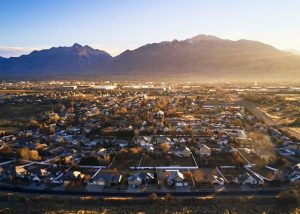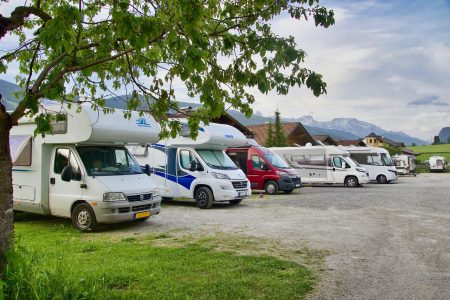Muktinath, highly worshipful for any Hindu or Buddhist energetic, occupies the Mustang district at an altitude of about 3,800 meters. Here thousands of pilgrims and adventure seekers came every year with prayers on their lips and an admiring gaze on the Himalayas. While some go by a tour package or public transport, there is a common question road-trippers ask: Is self-driving to Muktinath safe and legal?
Let’s dig into it a bit more and see what one needs to know about heading toward Muktinath on a road trip by his or her own vehicle.
- Is Self-Driving to Muktinath Legal?
Yes, self-driving to Muktinath is legal; however, there are some rules and conditions:
- If You Are an Indian Citizen:
An Indian citizen enjoys the right to drive in Nepal with his or her Indian driving license. Although no special permit is required for driving in most parts of Nepal, the vehicle must have Indian registration and insurance. Further, upon entering Nepal, a Vehicle Entry Permit must be obtained at the border. This is alternatively referred to as the “Bhansar” permit and is issued by the Nepal Customs Office.
- Required Documents:
The standard documents for legal driving in Nepal include:
- Valid Indian driving license
- Original vehicle registration certificate (RC)
- Vehicle insurance papers
- Pollution Under Control certificate
- Bhansar Permit (Customs entry permit)
- Route permit for restricted areas (if applicable)
A special permit must be secured in Mustang, the region where the Muktinath sits. This may also include acquiring a TIMS card along with the ACAP permit for foreign tourists.
- Is the Route Safe for Self-Driving?
- Road Condition:
From Pokhara to Jomsom (the base for Muktinath), the road is half blacktop and dirt vehicle track. The last bit of the way from Jomsom to Muktinath is quite rough, narrow, and steep. Such driving is difficult throughout the monsoon season (June to August) when landslides tend to occur.
- Vehicle Type:
Strongly recommended for a self-drive: a 4×4 SUV or high-ground-clearance vehicle. Smaller cars might be a no-go for the off-road stretches, more so after Jomsom.
- Weather Conditions:
Dry and stable weather conditions are preferred between March to May and September to November for self-drive trips to Muktinath. During winters, due to heavy snowfall and road blocks, these trips must be avoided.
- Fuel and Repair:
Limited fuel stations are available up to Beni or Jomsom. Alternative way is to carry extra fuel with you, making sure your vehicle is well maintained before embarking on the journey. There are hardly any vehicle repair services beyond Jomsom.
- Local Rules and Driving Culture
Nepal follows left-side driving, just like the Indian system. Mountain roads, on the other hand, are narrow and require lots of careful attention. The local bus and jeeps can be speeding on these roads, honking even before they make the curve. Respect local traffic laws, speed limits, and never overtake on a blind turn. A local guide or someone familiar with the terrain will help, especially if you are driving for the first time in Nepal.
- Safety Tips for Self-Driving to Muktinath
The here are some safety considerations to take into account:
- Plan Your Route: Know the route from Gorakhpur to Pokhara, then from Pokhara to Jomsom; from Jomsom to Muktinath.
- Start Early: Daylight makes driving safer along mountain roads.
- Essentials: Remember to take essential items-food, water, first-aid kit, torch, and some basic toolkit.
- Offline Maps: Carry a paper map or use an offline GPS since no cellular network works up there.
- Stay Updated: Check the weather and recent road conditions before beginning each leg of your journey.
- When Self-Drive Isn’t Ideal
On paper, a drive to Muktinath on one’s own sounds great. But it is no walk in the park, so to speak. So if you are shaky going uphill or if your vehicle is not meant to negotiate rough roads, then hiring a local driver might prove the best option. Otherwise, try a package deal.
Most of the pilgrims prefer to book a Muktinath tour package from Gorakhpur that will provide vehicle, permits, accommodation, and local guide. These packages take off the stress of organizing on their own, ensuring a safer and well-planned trip, especially for elderly travelers or families.
- Self-Drive vs. Tour Package – What Is Better?
You have the liberty of going anywhere in Nepal, if it is a self-drive trip; hence, you may relish any austere places. This was made more apt for self-drive holidays, not for the faint-hearted, and ones that have confidence in their own skills to negotiate a vehicle. For comfort, safety, and a hassle-free trip to Nepal, one could choose tour packages instead. Tour packages often include everything from border permits to hotel bookings, and even helicopter options from Jomsom to Muktinath. This helps in concentrating more on the spiritual and scenic beauty of the journey and less on the road challenges.
Final Thoughts
So, may one drive to Muktinath legally? The answer is yes, and it does require thorough preparation. The right documents, the proper vehicle, and the right attitude are necessary. The road could present some obstacles but will, overwhelmingly, offer many rewards, traversing beautiful Himalayan landscapes.
Those who want fewer worries could go for a Muktinath tour package from Gorakhpur or anywhere nearby. Be it guided or self-drive, a trip to Nepal and Muktinath will surely turn out to be a great spiritual experience.






